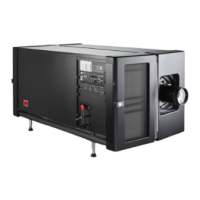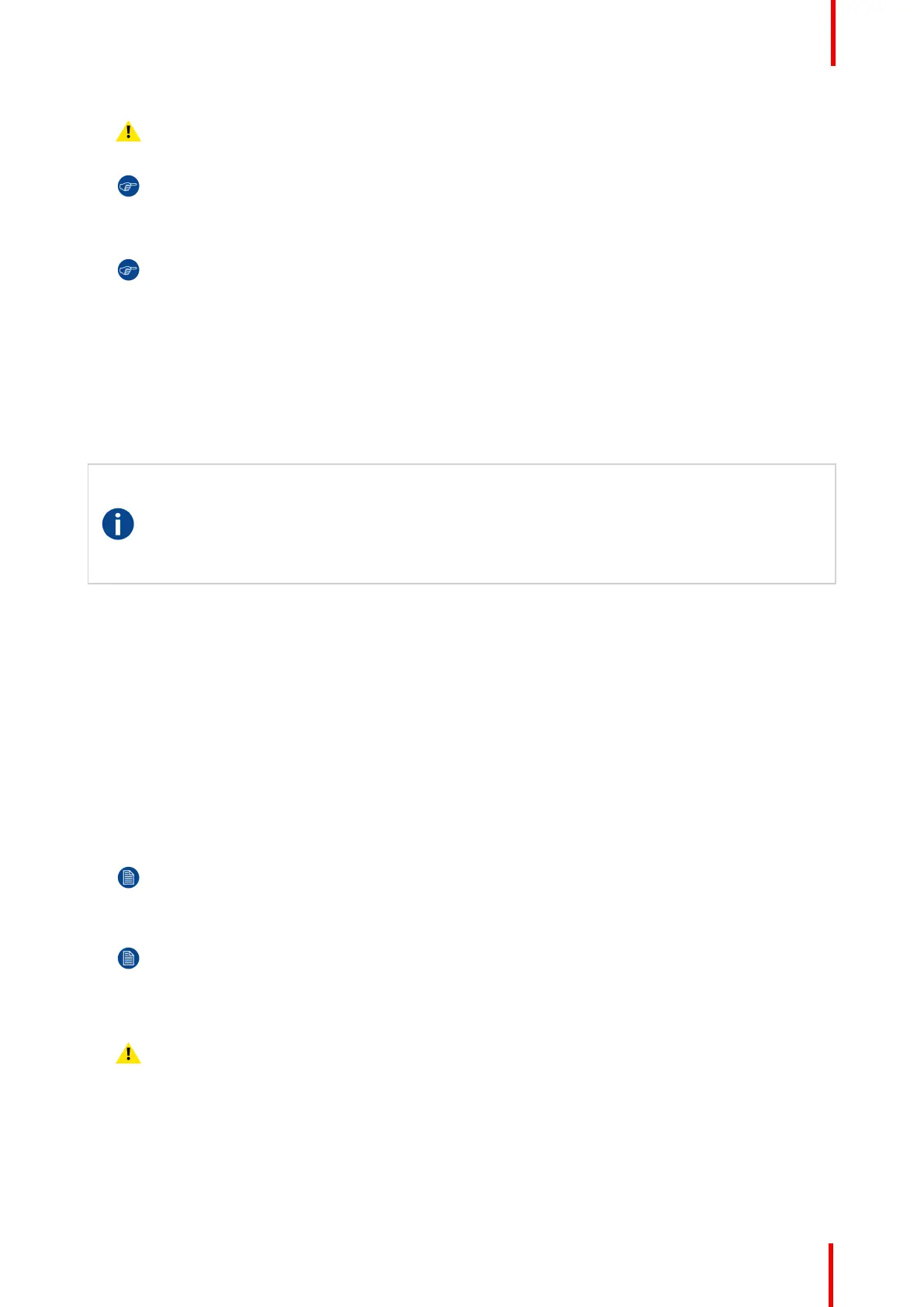R5906788-03 Thor series 137
Caution: In case of 3D, measure the xy coordinates once through the left eye glass of the 3D goggles
and once through the right eye glass.
Tip: When using the wizard for white point calibration you can immediately proceed with the electronic
correction.
4. Once all xy coordinates are measured and entered proceed by saving all measured values into a MCGD file.
Tip: Put in the MCGD file name the type of projection mode (2D, Laser3D, External 3D,...) and the
aspect ratio (FLAT, SCOPE).
5. Map the MCGD file with the TCGD file. Use for that the Communicator. Go to Installation > Color calibration >
Select target colors. For detailed instructions see user guide of the Communicator.
6. In addition you can check if the corrected colors complies. Use therefore the Communicator. Go to Installation
> Color calibration > Verify corrected colors. For detailed instructions see user guide of the Communicator.
13.4 Luminance calibration
Screen Brightness
Screen Brightness, or how bright a screen will look, involves measuring the light reflected from its
surface to our eyes. It takes into account the luminous flux (lumens) falling over its entire area (lux)
and how reflective the surface of the screen is. It literally is a measure of the light bouncing off the
screen. Luminance is measured in foot-lamberts. One foot-Lambert of luminance is equal to one
lumen per square foot.
Why calibrating the Light Sensor?
The purpose of luminance calibration is to make a reference between the light measured by the projector built-
in light sensor and the light reflected by the screen. This to tell the projector how much power the RGB lasers
require to get the desired screen brightness (e.g. 14 ft-L).
Required tools
• Spectroradiometer.
• Communicator.
Light Sensor Calibration process
1. Setup the ambient light conditions as it should be during the play out of the movie. (e.g. only the stairs and
emergency exit lighting is switched on).
Note: In an optimal setup less than 1% of light from any other source than the light from the projector
should illuminate the screen.
2. Project a none calibrated full white test pattern with the desired aspect ratio (e.g. FLAT).
Note: Per aspect ratio (FLAT, SCOPE, …) the light sensor needs to be calibrated for optimal result.
3. Measure the reflected light from the center of the screen with a spectroradiometer. Position the
spectroradiometer perpendicular to the screen in the auditorium sweet spot.
Caution: Do not measure the light through the port window of the boot area!
4. Adjust the light output of the projector with the Communicator to obtain the desired screen brightness (e.g.
14 ft-L). Ssee user guide of the Communicator for detailed instructions.
5. Create a Light Sensor Calibration file (LSC-file) based on the adjusted light output and projected aspect
ratio. For detailed instructions see user guide of the Communicator.
Calibration

